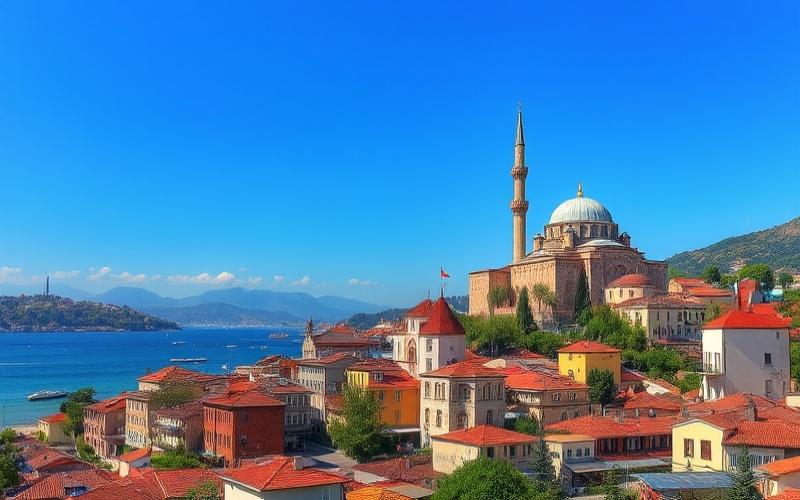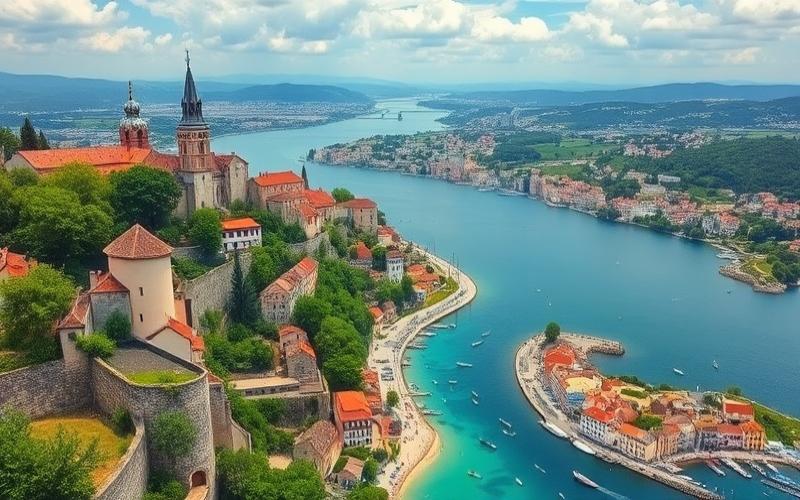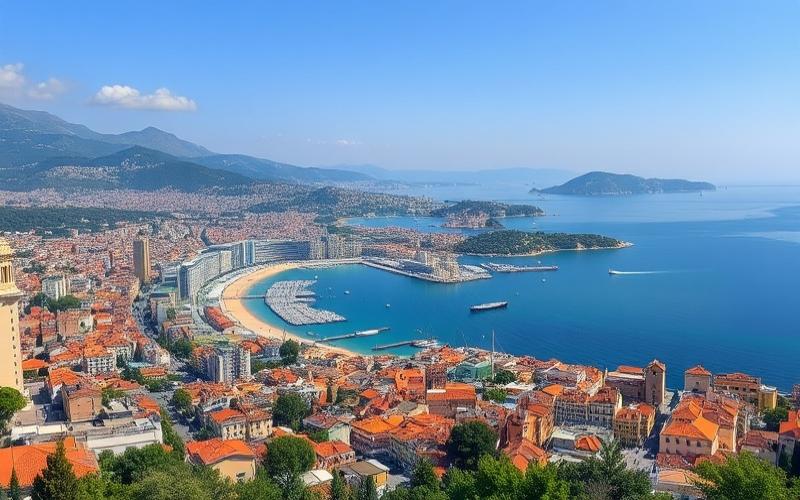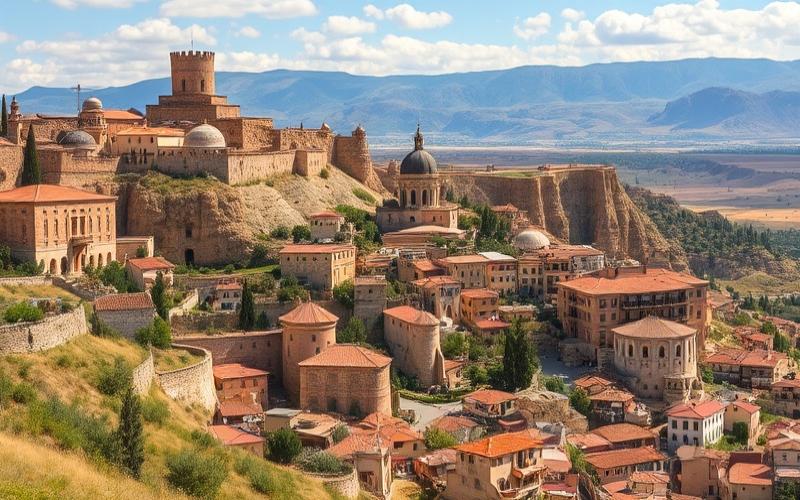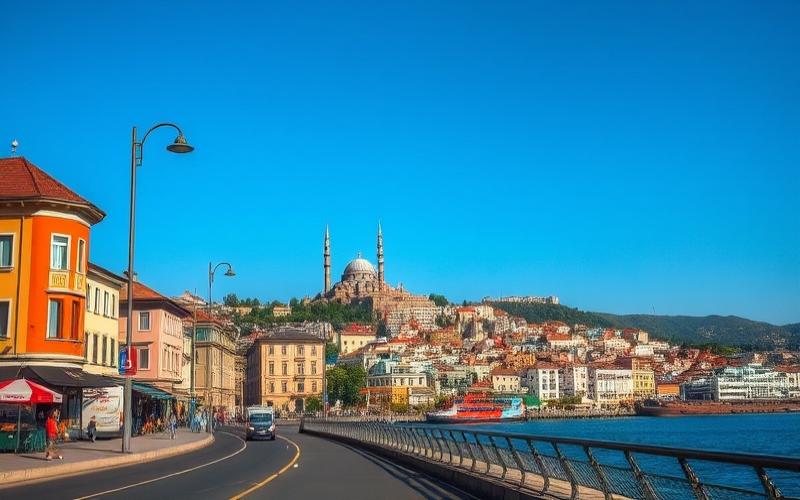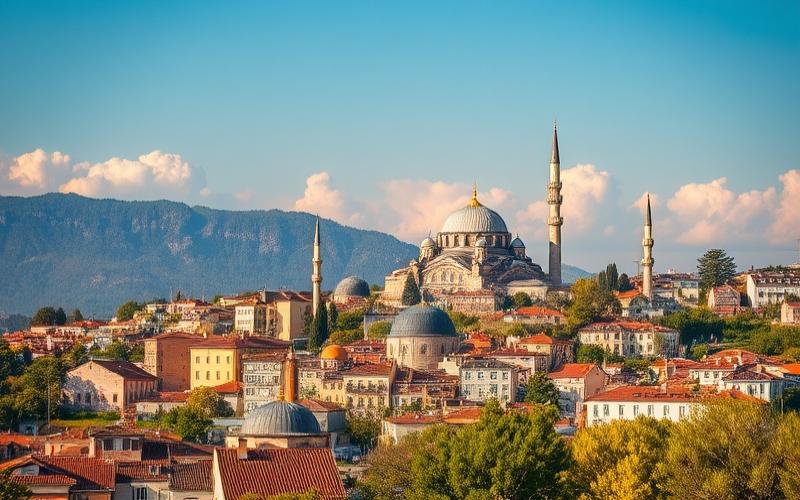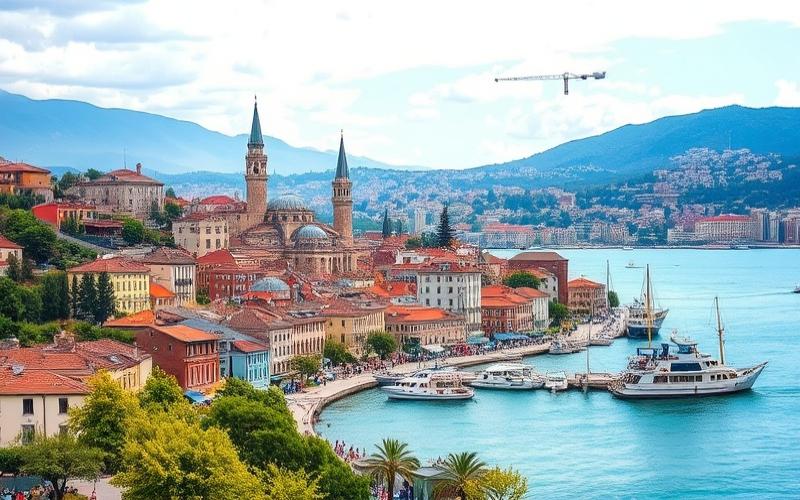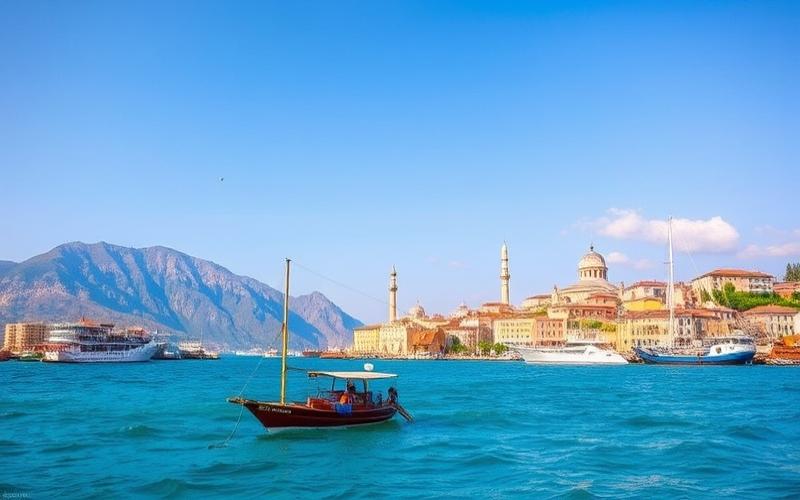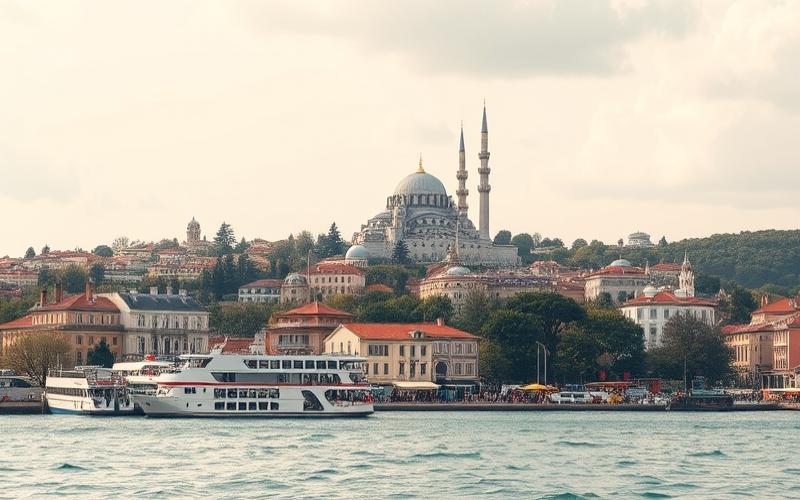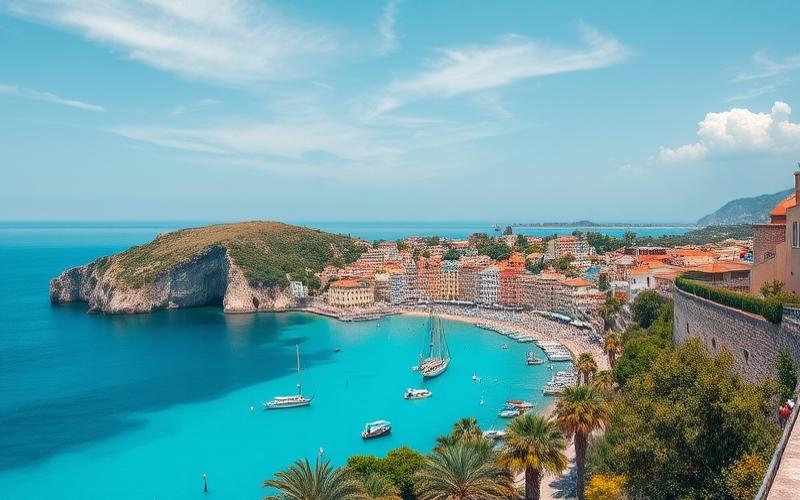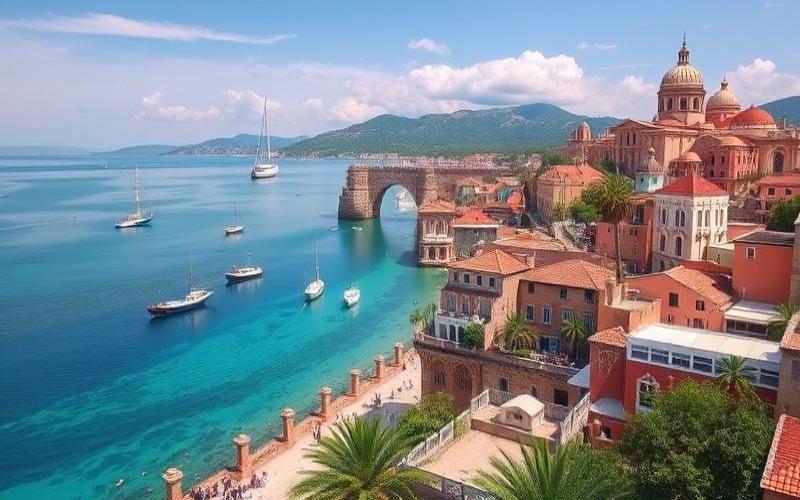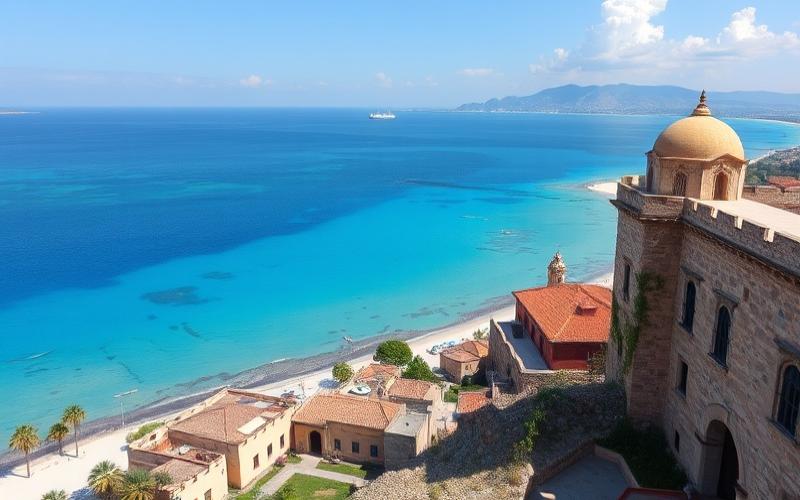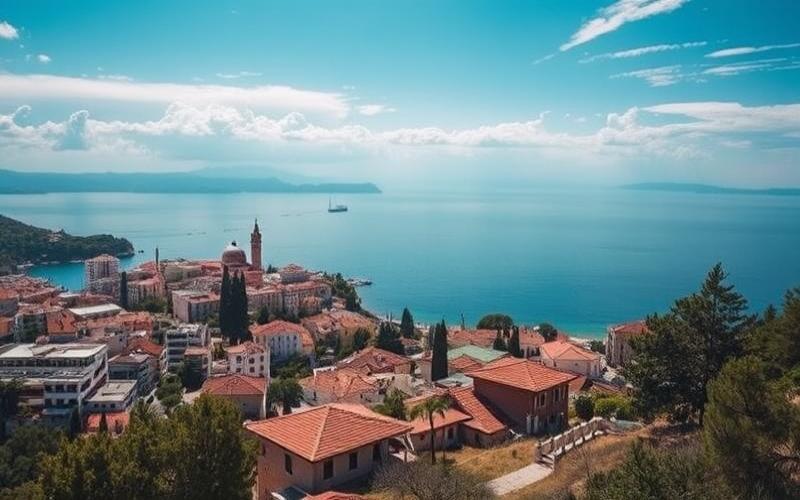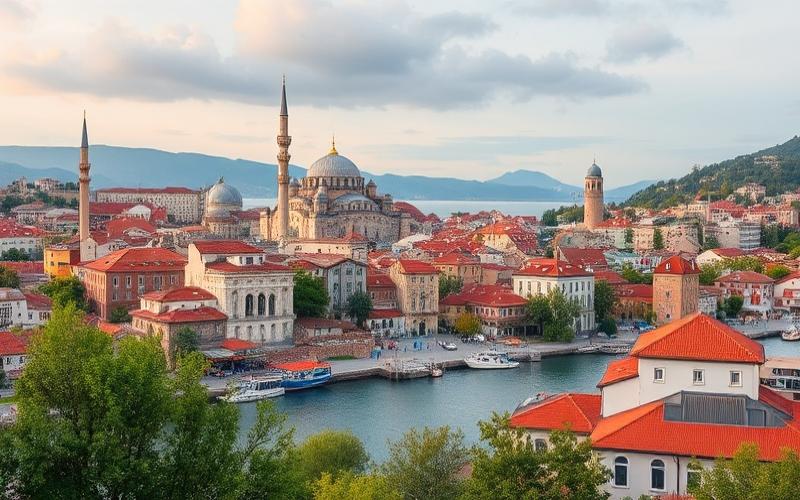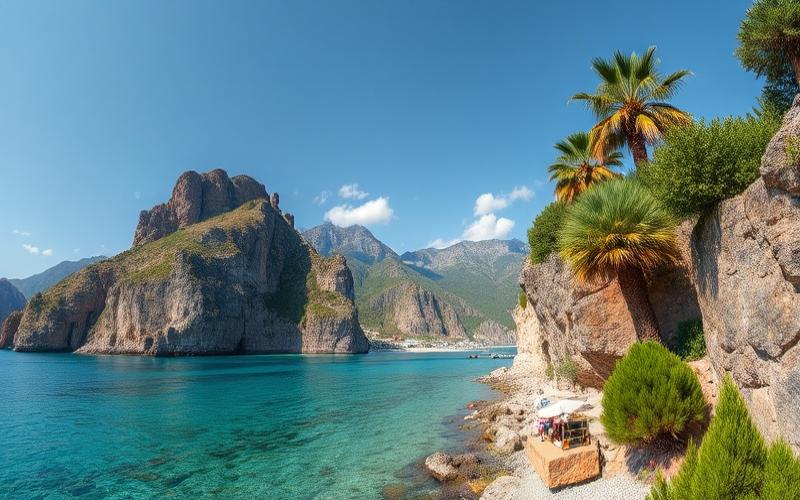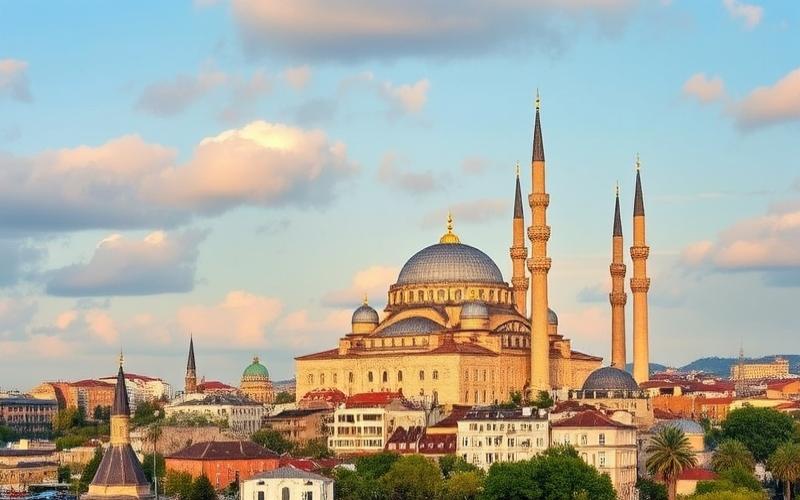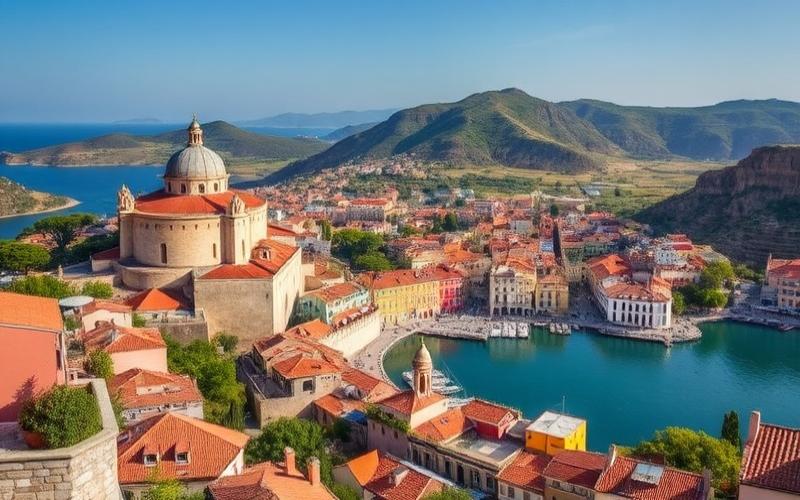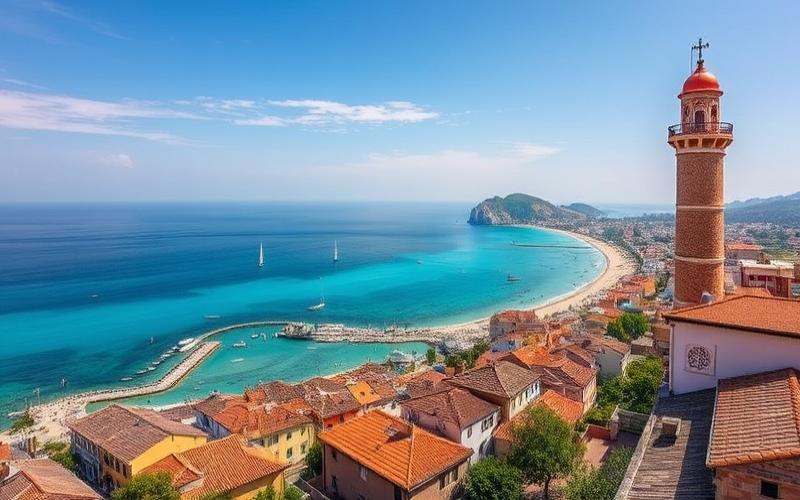
 Published on and written by Cyril Jarnias
Published on and written by Cyril Jarnias
Rural life in Turkey is a realm rich with centuries-old traditions and picturesque landscapes, yet it also faces a series of unique challenges in our modern era. In a country where vast countryside intertwines with cultural heritage, rural communities find themselves at a crossroads between preserving their legacy and adapting to new economic realities.
Opportunities abound in these regions, whether through promoting sustainable tourism, encouraging organic farming, or revitalizing artisanal crafts, while obstacles such as depopulation, limited access to services, and the impacts of climate change require innovative solutions.
This article explores the multiple facets of this dynamic, offering a fascinating glimpse into the potential and ambitions shaping the future of Turkey’s rural areas.
Introduction to Rural Life in Turkey
Rural life in Turkey is characterized by a slower pace of life, strong connection to nature, and attachment to traditions. Villages, located along coasts, in mountains, or fertile valleys, are spaces where cultural heritage and ancestral practices blend.
General Characteristics:
- Village sizes range from a few houses to several thousand inhabitants.
- Daily life revolves around agricultural work, livestock, household tasks, and maintaining traditional artisanal activities (weaving, pottery…).
- The community atmosphere fosters solidarity and mutual aid among neighbors.
Main Economic and Agricultural Activities:
- Agriculture remains the economic pillar with diverse production depending on the region: grains, fruits (especially citrus in the south), vegetables, olive trees.
- Traditional techniques like crop rotation coexist with the gradual introduction of modern methods (smart irrigation, organic farming).
- Cattle and sheep farming often complement this main activity.
- Some areas benefit from support from specialized institutions to promote sustainable agriculture.
| Activity | Description | Recent Innovations |
|---|---|---|
| Grains & Vegetables | Varied cultivation depending on climate/region | Organic farming |
| Arboriculture | Citrus (south), olive trees (west) | Advanced irrigation systems |
| Livestock | Cattle/sheep/poultry | Moderate genetic selection |
| Handicrafts | Tapestry, embroidery | Traditional preservation |
Demographic Structure:
- Progressive aging due to massive rural exodus since the 1950s towards industrial cities.
- Predominance of elderly populations; young adults leave to seek jobs in cities or abroad.
- Communities often united around the extended family core; marital alliances frequently from the same village or ethnic group.
Local Traditions and Customs:
- Strong intergenerational transmission: unique local religious festivals, collective village ceremonies,
- Marked Turkish hospitality,
- Preservation of regional dialects,
- Local crafts valued during community events.
Impact of Government Policies & Recent Economic Developments:
- Agricultural mechanization from 1950 → reduced labor needs → massive rural exodus
- Urban policies favoring industrialization at the expense of rural development
- Recent programs aiming to revitalize certain rural areas through agricultural subsidies or ecotourism
Opportunities Offered by Rural Life:
- Superior environmental quality (clean air, natural spaces)
- Growing opportunities in agritourism or local organic products
- Strong social solidarity
Persistent Challenges for These Communities:
List of Main Challenges:
- Progressive depopulation causing closure of schools/public services
- Accelerated aging limiting generational renewal
- Unequal access to modern infrastructure (digital health/transportation)
List of Main Opportunities:
- Development potential through green tourism/agritourism
- Valorization of local artisanal skills
- Growing institutional support for innovative rural initiatives
Good to Know:
Rural life in Turkey is heavily focused on agriculture, with activities like wheat and cotton cultivation, and livestock farming, which economically support these regions. Rural communities often consist of extended families and comprise an aging population with low demographic growth. Local traditions, such as harvest festivals and crafts, play a central role in community life. Recent government policies and economic shifts, including agricultural modernization and rapid urbanization, have brought infrastructure improvements but also threaten the traditional way of life. Despite these challenges, opportunities exist in rural tourism and agritourism, offering the possibility to diversify income and revitalize local communities. However, limited access to health and education services remains a notable obstacle for the sustainable development of these regions.
Economic and Cultural Opportunities in the Turkish Countryside
Main Rural Economic Sectors in Turkey
The Turkish countryside relies primarily on agriculture, which employs nearly one-third of the active population and remains essential for employment and exports (grains, fruits, vegetables, livestock). Rural tourism is experiencing sustained growth thanks to the valorization of natural and cultural heritage. Local crafts (traditional textiles, pottery) and small agri-food or manufacturing industries play a complementary role in economic diversification. This sectoral diversity promotes sustainable development by reducing dependence on a single activity and generating multiple income streams.
| Sector | Main Contribution | Effects on Development |
|---|---|---|
| Agriculture | Employment, exports | Food security |
| Rural Tourism | Cultural/natural valorization | Complementary income |
| Handicrafts | Traditional know-how | Tourist attractiveness |
| Small Local Industries | Food processing/manufacturing | Job creation |
Economic diversification helps limit risks related to agricultural or geopolitical crises while stimulating local innovation.
Local Initiatives & Government Policies
Several public and local programs support rural development:
- Targeted agricultural subsidies to modernize farms
- Technical training for farmers (organic farming, modern management)
- Technical support through government agencies or specialized NGOs
- Tax incentives for establishing small rural businesses
Examples:
- National programs supporting agri-food transformation
- Regional initiatives to promote green or community tourism
- Rural training centers offering entrepreneurial support
Cultural Opportunities: Festivals, Crafts & Heritage
The Turkish countryside regularly hosts traditional festivals, showcasing folk dances, local music, and regional cuisine. Local crafts (Anatolian carpets, ceramics) also benefit from growing recognition among national/international visitors. Historic villages or UNESCO sites strongly contribute to cultural outreach.
These elements are leveraged through:
- Organization of annual events attracting urban/foreign tourists
- Cooperative shops promoting authentic artisanal products
- Tourist circuits focused on discovering architectural/rural heritage
Cultural valorization is a key lever for revitalizing the local economy.
Infrastructure, Education & Technological Innovation
Improvement of rural infrastructure—renovated secondary roads, expanded access to high-speed internet—facilitates commercial and tourist exchanges. Education plays a central role: modernized rural schools and adapted vocational training stimulate entrepreneurial spirit. Innovative solutions such as:
- Digital platforms facilitating direct agricultural/artisanal sales,
- Use of connected agricultural technologies (smart irrigation), strengthen rural competitiveness.
List of structuring factors:
- Logistical/agricultural modernization
- Facilitated internet access
- Adapted vocational training
Testimonials/Successful Case Studies
Some villages have transformed their economy through ecological tourism: organizing immersive homestays with artisanal workshops. Women’s cooperatives have successfully developed local brands recognized even in major cities. Other communities stand out for their ability to export regional culinary specialties to Europe thanks to public logistical support.
| Community | Flagship Initiative | Impact |
|---|---|---|
| Village x | Ecological tourism | Increase in local income |
| Cooperative y | Women’s handicrafts | Social empowerment/commercial growth |
Persistent Challenges & Possible Solutions
Main obstacles encountered:
- Limited access to private funding
- Inadequate infrastructure outside main routes
- Strong emigration to urban areas
- Occasional lack of adapted training
Possible solutions:
- Strengthening rural microcredit
- Continuous public investment in transportation/internet
- Increased promotion of innovative technical/agricultural training
- Encouraging return migration through tax incentives
Sustainable success requires a coherent policy blending continuous institutional support, strong community involvement, and constant adaptation to socio-economic changes.
Good to Know:
In the Turkish countryside, agriculture, rural tourism, handicrafts, and small local industries constitute the major economic pillars, and their diversification fosters sustainable development. Local initiatives like subsidy programs and training in agronomy and business management, often supported by the government, energize the agricultural economy, while traditional festivals and historical heritage attract tourists. Improving infrastructure, education, and technological innovation is crucial to maximizing these opportunities, as shown by rural communities that have revitalized their economy through a focus on local culture and tourism. However, persistent challenges such as limited access to markets and funding hinder this development, requiring solutions like strengthening distribution networks and increasing economic incentives.
Challenges Faced by Expatriates in Rural Turkey
Language Barrier and Communication
The language barrier constitutes one of the major obstacles for expatriates in rural areas. Few villagers speak English or other foreign languages, making daily communication difficult, especially for administrative procedures, requesting information, or even interacting during market purchases.
“Even with some basic Turkish, I often felt isolated during group discussions at the village coffeehouse.”
Learning Turkish is highly recommended but represents an additional challenge for those unaccustomed to learning a non-Latin language.
Difficulties Integrating into Local Communities
Rural communities are sometimes closed to foreigners, due to distrust or attachment to their traditions.
Integration can take time: it’s common for newcomers to be observed from a distance before trust is established.
Some expatriates report being invited to local festivals only after several months, a sign that acceptance happens gradually:
“At first, I was ‘the foreigner,’ then I was invited to a local religious festival after almost a year in the area.”
Challenges Accessing Health Services and Local Infrastructure
| Challenge | Concrete Examples |
|---|---|
| Healthcare Access | Remote medical centers (several dozen kilometers away), staff rarely speaking English |
| Infrastructure | Unstable or non-existent internet in some villages; poorly maintained roads |
| Testimonial | “To see a specialist, I had to travel over an hour to the nearest city” |
Administrative and Legal Complications
Procedures such as residence permits or registration with local authorities can be lengthy and complex without Turkish proficiency or specialized administrative assistance.
Understanding rules related to land ownership or rental contracts sometimes differs significantly from Western models.
Example: An expatriate had to use an official translator to finalize his agricultural lease because the contract existed only in Turkish.
Limited Availability of Social and Cultural Activities
- Few or no cinemas/theaters
- Events mainly religious/traditional
- Sports clubs often reserved for locals
“I quickly felt a lack in terms of leisure activities shared with my foreign peers; everything went through the highly codified local social life.”
Impact of Distance from Urban Centers on Daily Life
- Increased difficulty accessing specific banking services (international banks)
- Scarcity or total absence of stores offering imported products/international brands
Concrete example: “To buy certain basic European foods like French cheese, I had to wait for a trip to the city every two months”
Psychological effect noted in several testimonials:
“The distance sometimes amplifies the feeling of cultural isolation when you don’t share all the dietary or festive habits”
Schematic Summary
| Major Challenge | Concrete Manifestations/Examples |
|---|---|
| Language Barrier | Social isolation; administrative difficulties |
| Closed Communities | Slow integration; late invitations |
| Limited Access to Health/Infrastructure | Long travel; unstable internet |
| Administrative/Legal Complexity | Need for official translators |
| Limited Social/Cultural Activities | Lack of modern leisure/foreign community |
| Distance from Urban Centers | Restricted access to international products/services |
The challenges encountered are therefore multiple and require constant adaptation as well as patience before any successful integration in rural Turkey.
Good to Know:
Expatriates living in rural Turkey often face major challenges, including the language barrier making communication difficult, especially where English is rarely spoken. Integration into communities sometimes hesitant towards foreigners can also be problematic. In terms of services, access to healthcare and local infrastructure is limited, sometimes requiring long trips to urban areas for treatment or essential services. Administrative and legal procedures can be complicated, as some expatriates have struggled to obtain necessary residence or work permits. Moreover, social and cultural opportunities are often restricted, which can amplify feelings of isolation. For example, a French expatriate shared her experience of having to travel repeatedly to Ankara to renew her visa due to the absence of a competent office in her region. The distance from major urban centers also affects access to leisure, forcing residents to make do with limited local activities.
Strategies to Promote Turkey’s Rural Areas
The economic and social development of rural areas in Turkey requires a multidimensional approach, mobilizing agricultural innovation, sustainable tourism infrastructure, valorization of local crafts, and community engagement.
Main Approaches to Stimulate Rural Development:
Support for Sustainable Agriculture
- Modernization through agritech (smart irrigation, organic farming, digitalization).
- Government incentives to favor environmentally friendly practices.
- Assistance in transitioning to commercialization and market access for small producers.
Development of Sustainable Tourism Infrastructure
- Investment in eco-friendly accommodations (examples inspired by Costa Rica or certain French regions where green tourism energizes local economies).
- Creation of cultural routes highlighting natural and historical heritage.
Promotion of Local Crafts
- Support for artisanal cooperatives: professional training, access to microcredit.
- Establishment of digital platforms for direct sales (success observed in Morocco or India with digital marketplaces).
Internationally Adaptable Examples:
| Region | Successful Initiative | Adaptability to Turkey |
|---|---|---|
| France | Short agricultural circuits & organic labels | Promote local direct sales |
| Costa Rica | Sustainable rural tourism | Valorize Anatolian ecotourism |
| Morocco/India | Digital craft platforms | Develop artisanal e-commerce |
Key Success Factors:
Strong Community Engagement
Active involvement of residents in all stages – conception, implementation, and management.
Strengthening of rural associative fabric.
Public/Private Collaboration
Partnerships between local/national administrations, private companies, and NGOs.
Mobilization of joint investments to strengthen infrastructure (rural roads, high-speed internet) and social services.
Potential Challenges to Anticipate:
- Limited access to financial or technological resources
- Geographical inequalities: climatic/mountainous diversity requiring local adaptation
- Cultural resistance to innovation or change
- Continuous rural exodus reducing skilled labor
To succeed in these initiatives:
It is crucial to adapt each strategy to local specificities (varied climate between mountainous/Anatolian/coastal regions), while ensuring permanent technical support.
The systematic integration of sustainable natural resource management in every project allows not only for economic growth but also increased resilience to climate changes.
The active participation of Turkey’s rural communities – combined with constant dialogue between public and private actors – constitutes the main lever for inclusive development.
Good to Know:
To stimulate the economic and social development of rural areas in Turkey, various strategies can be explored, such as supporting organic agriculture, which not only preserves the environment but also adds value to products. Creating sustainable tourism infrastructure, inspired by successes in Spain or Italy, could attract visitors seeking authenticity. Encouraging local crafts would also preserve cultural traditions while generating income. Community engagement is crucial, ensuring that initiatives meet local needs, while collaboration between public and private sectors could mobilize additional resources. However, challenges remain, including limited access to resources or the need to adapt strategies to the cultural and geographical specificities unique to each region.
Disclaimer: The information provided on this website is for informational purposes only and does not constitute financial, legal, or professional advice. We encourage you to consult qualified experts before making any investment, real estate, or expatriation decisions. Although we strive to maintain up-to-date and accurate information, we do not guarantee the completeness, accuracy, or timeliness of the proposed content. As investment and expatriation involve risks, we disclaim any liability for potential losses or damages arising from the use of this site. Your use of this site confirms your acceptance of these terms and your understanding of the associated risks.


